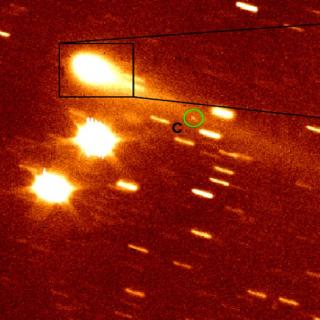Bibcode
Sicardy, B.; Ortiz, J. L.; Assafin, M.; Jehin, E.; Maury, A.; Lellouch, E.; Hutton, R. Gil; Braga-Ribas, F.; Colas, F.; Hestroffer, D.; Lecacheux, J.; Roques, F.; Santos-Sanz, P.; Widemann, T.; Morales, N.; Duffard, R.; Thirouin, A.; Castro-Tirado, A. J.; Jelínek, M.; Kubánek, P.; Sota, A.; Sánchez-Ramírez, R.; Andrei, A. H.; Camargo, J. I. B.; da Silva Neto, D. N.; Gomes, A. Ramos; Martins, R. Vieira; Gillon, M.; Manfroid, J.; Tozzi, G. P.; Harlingten, C.; Saravia, S.; Behrend, R.; Mottola, S.; Melendo, E. García; Peris, V.; Fabregat, J.; Madiedo, J. M.; Cuesta, L.; Eibe, M. T.; Ullán, A.; Organero, F.; Pastor, S.; de Los Reyes, J. A.; Pedraz, S.; Castro, A.; de La Cueva, I.; Muler, G.; Steele, I. A.; Cebrián, M.; Montañés-Rodríguez, P.; Oscoz, A.; Weaver, D.; Jacques, C.; Corradi, W. J. B.; Santos, F. P.; Reis, W.; Milone, A.; Emilio, M.; Gutiérrez, L.; Vázquez, R.; Hernández-Toledo, H.
Referencia bibliográfica
Nature, Volume 478, Issue 7370, pp. 493-496 (2011).
Fecha de publicación:
10
2011
Revista
Número de citas
149
Número de citas referidas
137
Descripción
The dwarf planet Eris is a trans-Neptunian object with an orbital
eccentricity of 0.44, an inclination of 44 degrees and a surface
composition very similar to that of Pluto. It resides at present at 95.7
astronomical units (1AU is the Earth-Sun distance) from Earth, near its
aphelion and more than three times farther than Pluto. Owing to this
great distance, measuring its size or detecting a putative atmosphere is
difficult. Here we report the observation of a multi-chord stellar
occultation by Eris on 6 November 2010 UT. The event is consistent with
a spherical shape for Eris, with radius 1,163+/-6kilometres, density
2.52+/-0.05 grams per cm3 and a high visible geometric
albedo, . No nitrogen, argon or methane atmospheres are detected with
surface pressure larger than ~1nanobar, about 10,000 times more tenuous
than Pluto's present atmosphere. As Pluto's radius is estimated to be
between 1,150 and 1,200 kilometres, Eris appears as a Pluto twin, with a
bright surface possibly caused by a collapsed atmosphere, owing to its
cold environment. We anticipate that this atmosphere may periodically
sublimate as Eris approaches its perihelion, at 37.8 astronomical units
from the Sun.
Proyectos relacionados

Pequeños Cuerpos del Sistema Solar
Este Proyecto estudia las propiedades físicas y composicionales de los llamados pequeños cuerpos del Sistema Solar, que incluyen asteroides, objetos helados y cometas. Entre los grupos de mayor interés destacan los objetos trans-neptunianos (TNOs), incluyendo los objetos más lejanos detectados hasta la fecha (Extreme-TNOs o ETNOs); los cometas, y
Julia de
León Cruz